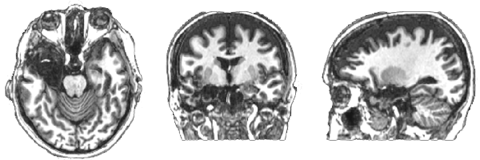Tennessee Twin Study

The Tennessee Twin Study (TTS) was started by BenjaminLahey, Ph.D. The TTS sample was selected in 2001 to be representative of all 6-17year old twins born in Tennessee and living in 28 urban, suburban, and rural counties surrounding Nashville, Memphis, Knoxville, Chattanooga, and Bristol. A total 2,023 twin pairs (4,046 youth) were studied during the first wave of the project. In collaboration with Benjamin Lahey, a subsample of these (now adult) twins are now being invited back to Vanderbilt to complete a battery of MRI and functional MRI tests, and a review of mental health symptoms in order to examine the neural and genetic correlates of broad dimensions of mental health symptoms. The study is funded by the National Institute of Health as part of the agency’s Research Domain Criteria Initiative (www.nimh.nih.gov/research-funding/rdoc/index.shtml). The present study takes a unique dimensional approach to examining mental health symptoms rather than examining specific categorical diagnoses, and will provide key information on the heritability of functional constructs and neural circuits related to mental health problems.
Individual Differences in Dopamine

This project uses positron emission tomography (PET) imaging to measure dopamine functioning in humans. We currently measure both striatal and extrastriatal levels of D2-like receptors, dopamine transporters, and amphetamine induced dopamine release. These studies examine the relationship between dopamine functioning, personality and cognitive ability. We have been particularly interested in externalizing personality factors (as expressed in terms of psychopathic, impulsive and novelty seeking traits) as these are significant risk factors for developing substance use disorders.
We have been particularly interested in measuring dopamine receptor levels in the dopamine midbrain (substantia nigra and ventral tegmental area) because receptors in this region are primarily autoreceptors that regulate dopamine cell firing. These studies have allowed the generation and testing of unique hypotheses relating weakened regulation of dopamine firing with externalizing personality traits.
These studies additionally examine the relationship of personality and genetics and responsiveness to amphetamine. Contrary to popular belief, not all people respond to amphetamine. While some people can clearly detect changes in energy and positive affect in response to amphetamine, some individuals cannot tell the difference between amphetamine and placebo. Our aim is to understand the relationship between subjective and cognitive responses to amphetamine and other traits, such as dopamine transporter and dopamine autoreceptor functions.
We additionally take a multimodal approach to studying dopamine functioning, using both functional MRI to examine the relationship between PET measures of dopamine functioning and functional MRI activations during tasks that engage the dopamine system.
Neuroeconomics

The field of neuroeconomics aims to understand the neural basis of valuation and economic decision making. These processes of valuation are closely related emotional processes and engage many of the areas of the brain that the lab focuses on (including the amygdala, orbitofrontal cortex, and the mesolimbic dopamine system. We therefore have begun a research program which combines neuroeconomic question with the other methodologies in the lab, including examining the effects of brain lesions on decision making and examining correlations between individual differences in dopamine functioning and individual differences in processes that impact valuation and risk assessment. To further study these functions, we also employ repetitive transcranial magnetic stimulation (rTMS) which allows us to temporarily inhibit brain regions, and test the causal effect of specific brain regions on decision making.
We have additional developed two novel tasks for studying decision-making. The most developed of these tasks is the Effort Expenditure for Reward Tasks (EEfRT), which is adopted from animal models of the role of dopamine functioning on motivation. We are currently collaborating on studies examining the neural correlates of individual differences in EEfRT performance and examining its utility in clinical conditions such as depression. We have also developed a novel task, called the Balloon Analog Insurance Tasks (BAIT), which assesses the extent to which individuals select to protect earnings. Insurance plays a major role in the economy, and there are widespread differences in individuals readiness to pay money now to protect themselves and their loved ones against harm. However, there has been surprisingly little research on this topic to date.
Aging, Dopamine and Decision Making
Pasted Graphic
Aspects of the dopamine system decrease with age. We are currently exploring the extent to which decreases in different aspects of the dopamine system are related to age-typical changes in decision making. These studies combine PET imaging and fMRI in order to specifically examine the extent to which age-related changes in dopamine functions are related to alterations in the reactivity of different brain regions involved in decisions-making tasks.
The Amygdala Project

The amygdala is an almond shape structure in the temporal lobe that is often described as a center for emotion, and more specifically fear. However, in truth the amygdala’s role in emotion and cognition is far more subtle. This project explores the changes in emotional processing that occur in individuals who have to have their amygdala removed in order treat epilepsy. These studies are complimented by fMRI studies of healthy individuals, and individuals with personality factors thought to be related to hyper or hyposensitive amygdala functioning.
The Orbitofrontal Cortex

The orbitofrontal cortex occupies the ventral surface of the frontal lobe (just above the orbits of the eyes). This region has fascinated psychologists since the famous case of Phineas Gage, who demonstrated changes in personality after damage to his orbitofrontal and medial frontal cortex. In this project, we examine patients who have had damage to the orbitofrontal cortex with a particular focus on emotion-attention interactions, and decision making. These studies are complimented by fMRI studies of the region using techniques optimized for this brain region.
For more information on the orbitofrontal cortex, see The Orbitofrontal Cortex (ed. Zald and Rauch), Oxford University Press.
Emotion Attention Interactions

We cannot attend to everything. Because of their importance, we selectively attend to emotional stimuli. Working with Steven Most and Marvin Chun, we developed a paradigm to measure the ability of emotional stimuli to capture attention. Using a technique that we call the emotional attentional blink, we demonstrated that emotional stimuli (such as threatening stimuli or erotica) can capture attention to such an extent that individuals are unable to see other stimuli for several hundred millisecond after the emotional stimulus has left the screen. We dubbed this effect emotion induced blindness. We continue to examine the utility of this technique for understanding attentional biases in psychophathological conditions including obsessive compulsive disorder and addiction.
We additionally have explored the ability of emotional stimuli to selectively enter awareness. A particularly nice example of this approach was developed with Eunice Yang and Randolph Blake who helped show that under conditions that usually suppress awareness of a stimulus, pictures of fear faces come out of suppression faster than other emotional expressions.